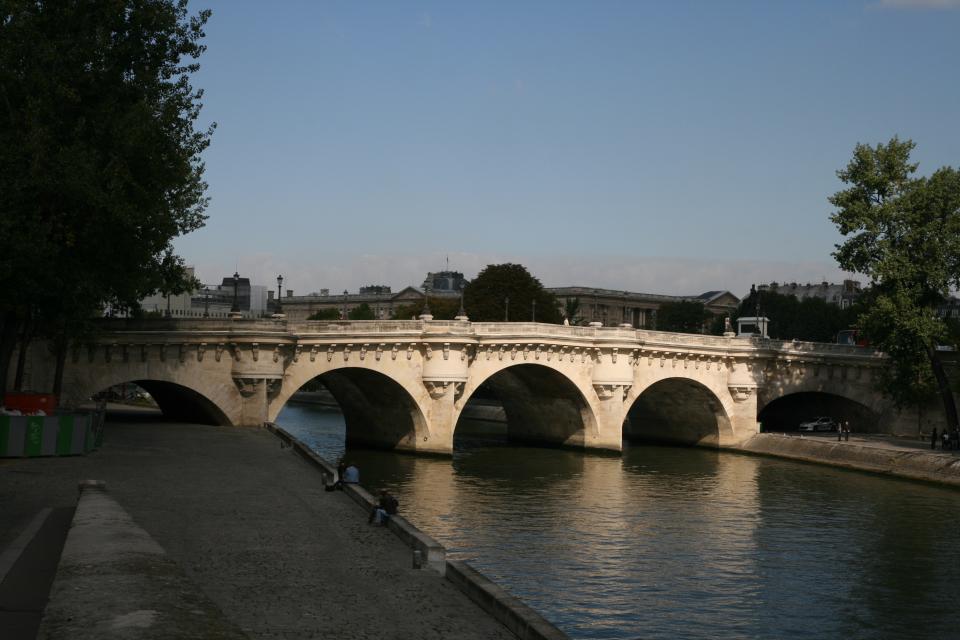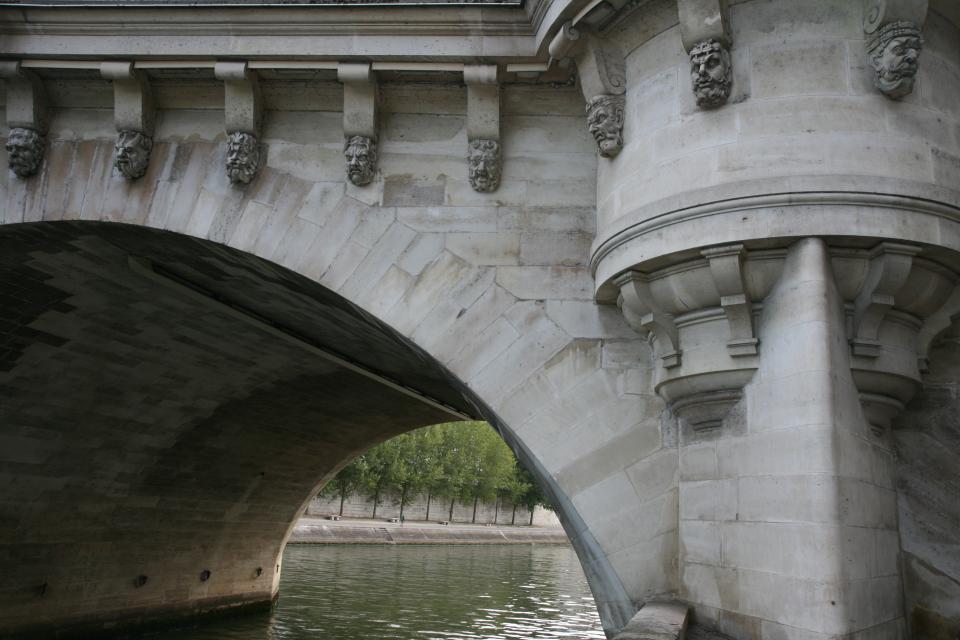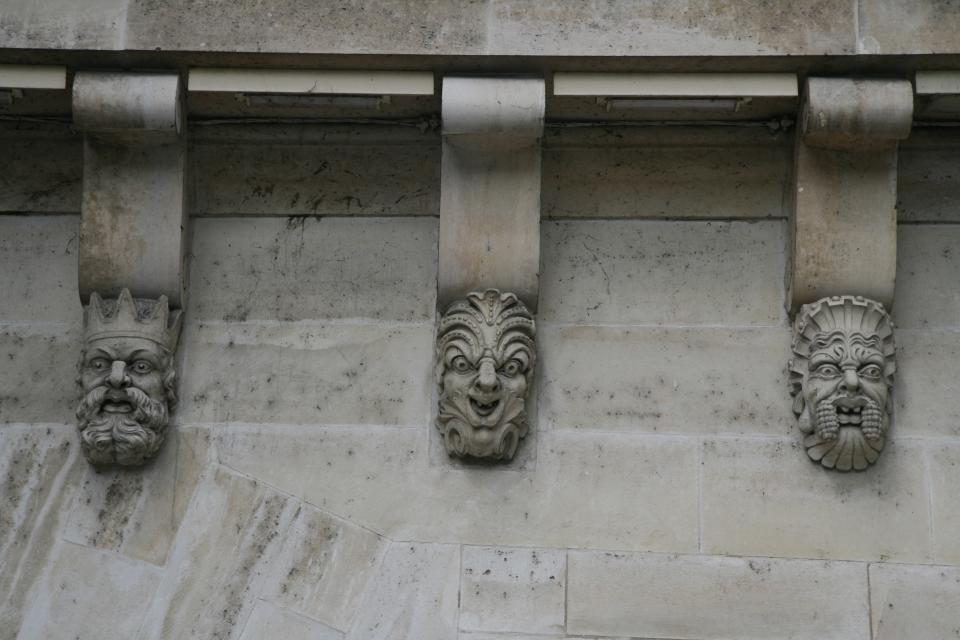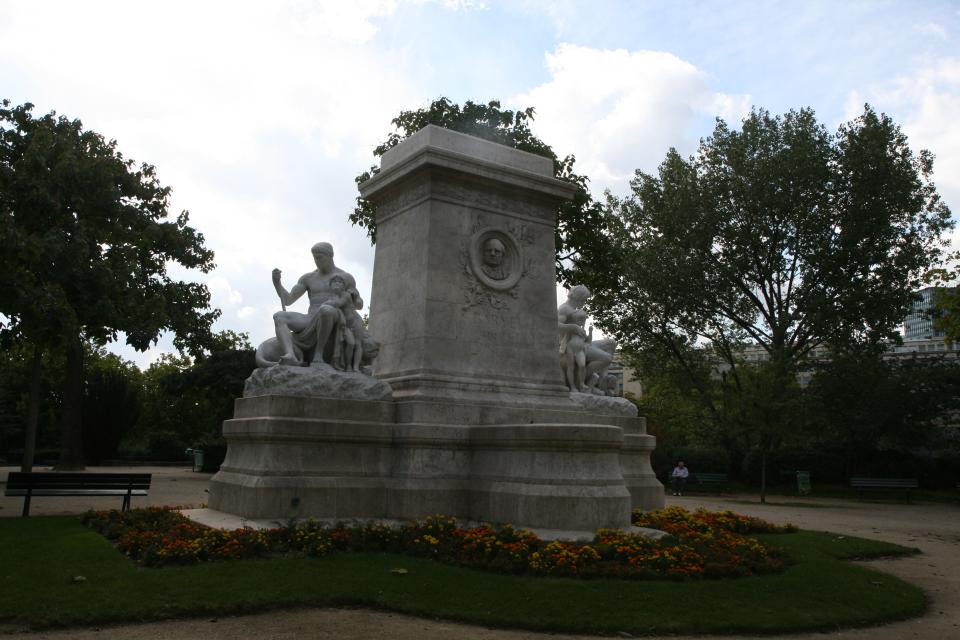Works by this Artist
Lion Crushing a Serpent
Antoine-Louis Barye, 1833
Images
Fig 1
Pont Neuf, Paris's oldest bridge. In the early 1850s, the French government commissioned Barye to decorate it with 97 masks.
Background
son of a goldsmith
Studies
with father; workshop of military engraver Fourier and goldsmith Martin-Guillaume Biennais; studied with sculptor François-Joseph Bosio (1816); with Antoine-Jean Gros; École des Beaux-Arts, Paris (1818-23)
Career
- 1831 – exhibits Tiger Devouring a Gavial Crocodile of the Ganges (bronze, Louvre, Paris) at Salon (favorable reviews); exhibits at the Salon regularly until 1837
- 1833 - named Chevalier of the Légion d’honneur
- 1845 – forms Barye & Cie with Emile Martin to produce casts of smaller sculptures for middle-class customers
- 1848 – appointed director of plaster casting and curator of the gallery of plaster casts at Louvre
- 1850 – teaches drawing at École Agronomique (Versailles)
- 1851 - Napoleon III commissions 97 decorative masks for Pont Neuf, Paris's oldest bridge
- 1854 – appointed Master of Zoological Drawing at Musée d’Histoire Naturelle
Commissions from
Louis-Philippe (King of France); Ferdinand-Philippe, Duc d’Orleans; Napoleon III
Important Artworks
- Tiger Devouring a Gavial Crocodile of the Ganges, 1831
- Napoleon I Crowned by History and the Fine Arts, 1857 (Sully Pavilion, Paris)
- Roger Abducting Angelica on the Hippogryph (Walters Art Gallery, Baltimore)
Documentation
Auguste Rodin recalled studying with Barye:
“He was a very simple man. His shabby suit gave him the seedy air of the poor tutors of the schools of that time. I have never known such a sad man, nor one with such power. He made his own editions, and sold them with great difficulty, at low prices. What misfortune to have lived in such a terrible period for a man of genius. He was so calumniated! He inspired us, poor, great man, us unfeeling urchins, with a defiance mingled with fear.”
Auguste Rodin, “Reflections on Art” (recorded by Henri C.E. Dujardin-Beaumetz) in Albert Elsen, Auguste Rodin. Readings on His Life and Work (Englewood Cliffs: Prentice-Hall, 1965), 147.
Regarding his studies, Rodin noted:
“I also went to the Jardin des Plantes [botanical garden, Paris], where Barye taught; I was friendly with his son….At the Jardin des Plantes, looking carefully, we ferreted out a basement, a kind of cellar whose walls oozed dampness; there we installed ourselves delightedly….They had the kindness to put up with us and to let us take pieces of animals from the [dissection] amphitheatres – lions’ paws, and so on….We worked like furies there; we were like wild beasts. The great Barye came to see us. He would look at what we had done and go away, usually without saying anything; but nonetheless it is from him that I learned most.”
Auguste Rodin, “Reflections on Art” (recorded by Henri C.E. Dujardin-Beaumetz), Auguste Rodin. Readings on His Life and Work, Albert Elsen (Englewood Cliffs: Prentice-Hall, 1965), 147.
Readings:
- Benge, Glenn F. Antoine-Louis Barye, Sculptor of Romantic Realism University Park, PA: Pennsylvania State University Press, 1984
- Johnston, William R. Untamed: the Art of Antoine-Louis Barye. Exhibition catalogue. Baltimore, MD: Walters Art Museum, 2006



